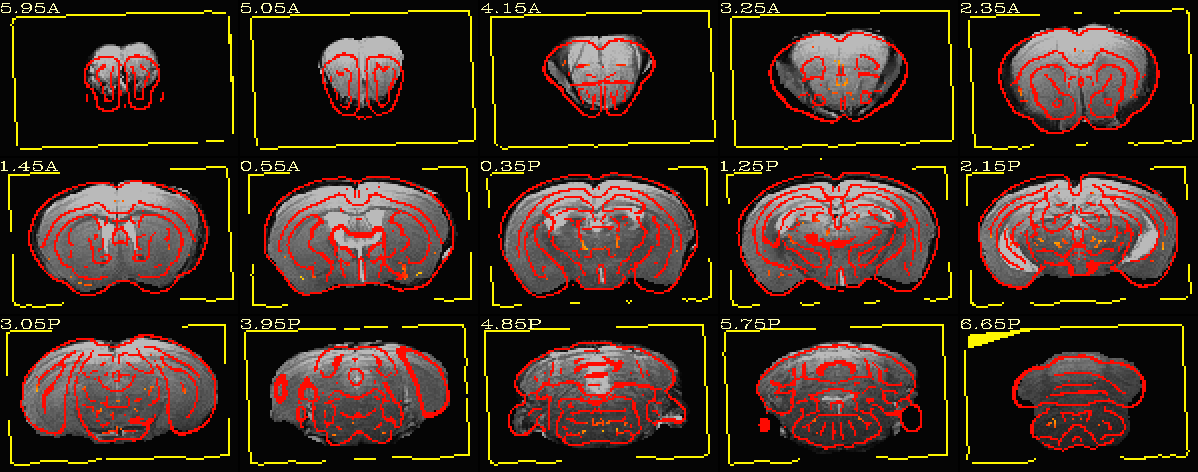This took a little while. The data has a number of unusual properties.
- First, while the data is consistent among all the input types (not including any potential left-right flipping), it does not have the correct orientation. This often happens with animal studies where the orientation of the animal's head is in a sphinx position, and the scanner's orientation are defined relative to typical human orientation planes. We can fix this by "desphinxifying" the data, redefining the orientation. That way the axial, coronal and sagittal images look like they belong to those planes.
- The data is very anisotropic. While this is fine for some clinical and histological analysis, it often doesn't work well with many of the things we do regarding alignment, like motion correction, alignment between datasets - epi to anat, anat to a template. With some of this (template at 10x10x200micron), the anisotropy is a factor of 20 times larger in a slice than the voxel resolution within the slice. That means all alignment even just slightly out of the plane of slice acquisition loses much of the resolution. Consider acquisitions that are more isotropic if that can meet your research goals. If you need the high in-plane resolution, a matched set of isotropic and anisotropic might be useful for computing transformations.
- The data has lots of empty space. That's not useful because it complicates alignment and uses up lots of memory and slows down all the computations. The program 3dAutobox can reduce the grid to only areas within a much smaller mask.
- @animal_warper can be used for alignment of the T2 dataset to a template. With some experimentation, I found the method below.
- Consider other mouse templates like the Allen mouse template and atlas. I have a version with a coordinate system and anisotropic voxels - link below.
# desphinxify (fix orientation) for template
desphinxify -input Mouse_template_RAI.nii \
-prefix Mouse_template_desphinx_rsp.nii.gz \
-workdir temp_desphx_rsp -orient_mid RSP
# desphinxify (fix orientation) for T2
desphinxify -input 01_T2_1_refit_masked.nii \
-prefix T2_desphx -workdir temp_T2_desphx_rsp -orient_mid RSP
# autobox data to make smaller
# downsample / resample to limiting T2 resolution
# and make isotropic 0.1mm
# align T2 to template
# use -align_type affine for testing to make this faster
# 1.0 mm is the feature_size used found through trial and error,
# larger than expected for mouse,possibly because of large anisotropy
# lpa cost function is used, some tissue contrast is similar,
@animal_warper -base Mouse_template_desphinx_rsp.nii.gz \
-input T2_rs_shft.nii.gz -feature_size 1 -dset_abbrevs T2 \
-outdir aw_test -base_abbrev template -cost lpa -ok_to_exist
template to T2 alignment (template shown as red edge overlay) - affine only
https://discuss.afni.nimh.nih.gov/t/how-to-rotate-mouse-brain-mri-for-quick-afni-registration/6403/9
